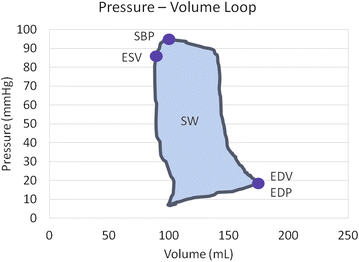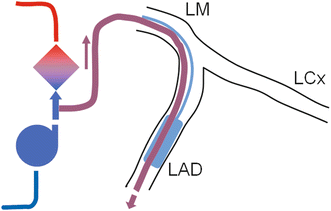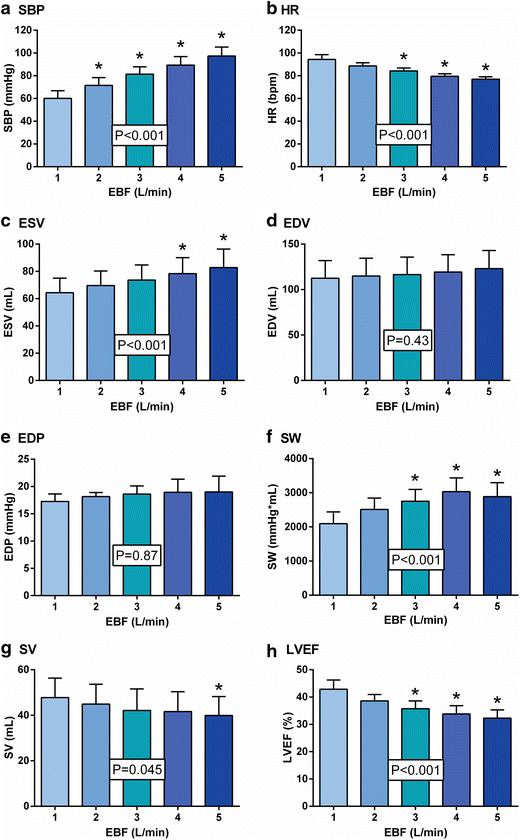Increasing venoarterial extracorporeal membrane oxygenation flow negatively affects left ventricular performance in a porcine model of cardiogenic shock
- PMID: 26275717
- PMCID: PMC4537539
- DOI: 10.1186/s12967-015-0634-6
Increasing venoarterial extracorporeal membrane oxygenation flow negatively affects left ventricular performance in a porcine model of cardiogenic shock
Abstract
Background: The aim of this study was to assess the relationship between extracorporeal blood flow (EBF) and left ventricular (LV) performance during venoarterial extracorporeal membrane oxygenation (VA ECMO) therapy.
Methods: Five swine (body weight 45 kg) underwent VA ECMO implantation under general anesthesia and artificial ventilation. Subsequently, acute cardiogenic shock with signs of tissue hypoxia was induced. Hemodynamic and cardiac performance parameters were then measured at different levels of EBF (ranging from 1 to 5 L/min) using arterial and venous catheters, a pulmonary artery catheter and a pressure-volume loop catheter introduced into the left ventricle.
Results: Myocardial hypoxia resulted in a decline in mean (±SEM) cardiac output to 2.8 ± 0.3 L/min and systolic blood pressure (SBP) to 60 ± 7 mmHg. With an increase in EBF from 1 to 5 L/min, SBP increased to 97 ± 8 mmHg (P < 0.001); however, increasing EBF from 1 to 5 L/min significantly negatively influences several cardiac performance parameters: cardiac output decreased form 2.8 ± 0.3 L/min to 1.86 ± 0.53 L/min (P < 0.001), LV end-systolic volume increased from 64 ± 11 mL to 83 ± 14 mL (P < 0.001), LV stroke volume decreased from 48 ± 9 mL to 40 ± 8 mL (P = 0.045), LV ejection fraction decreased from 43 ± 3 % to 32 ± 3 % (P < 0.001) and stroke work increased from 2096 ± 342 mmHg mL to 3031 ± 404 mmHg mL (P < 0.001). LV end-diastolic pressure and volume were not significantly affected.
Conclusions: The results of the present study indicate that higher levels of VA ECMO blood flow in cardiogenic shock may negatively affect LV function. Therefore, it appears that to mitigate negative effects on LV function, optimal VA ECMO blood flow should be set as low as possible to allow adequate tissue perfusion.
Figures



References
-
- Annich G, Lynch W, MacLaren G, Wilson J, Bartlett R, editors. ECMO. Extracorporeal cardiopulmonary support in critical care. 4th edn. Ann Arbor: Extracorporeal Life Support Organization; 2012.
-
- Beurtheret S, Mordant P, Paoletti X, Marijon E, Celermajer DS, Leger P, Pavie A, Combes A, Leprince P. Emergency circulatory support in refractory cardiogenic shock patients in remote institutions: a pilot study (the cardiac-RESCUE program) Eur Heart J. 2013;34:112–120. doi: 10.1093/eurheartj/ehs081. - DOI - PubMed
Publication types
MeSH terms
LinkOut - more resources
Full Text Sources
Other Literature Sources
Medical

